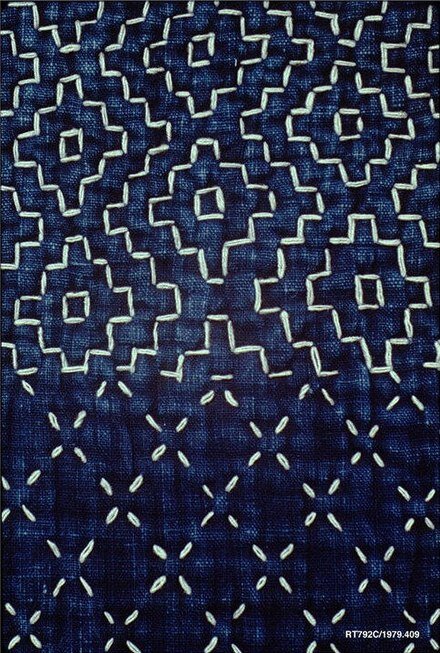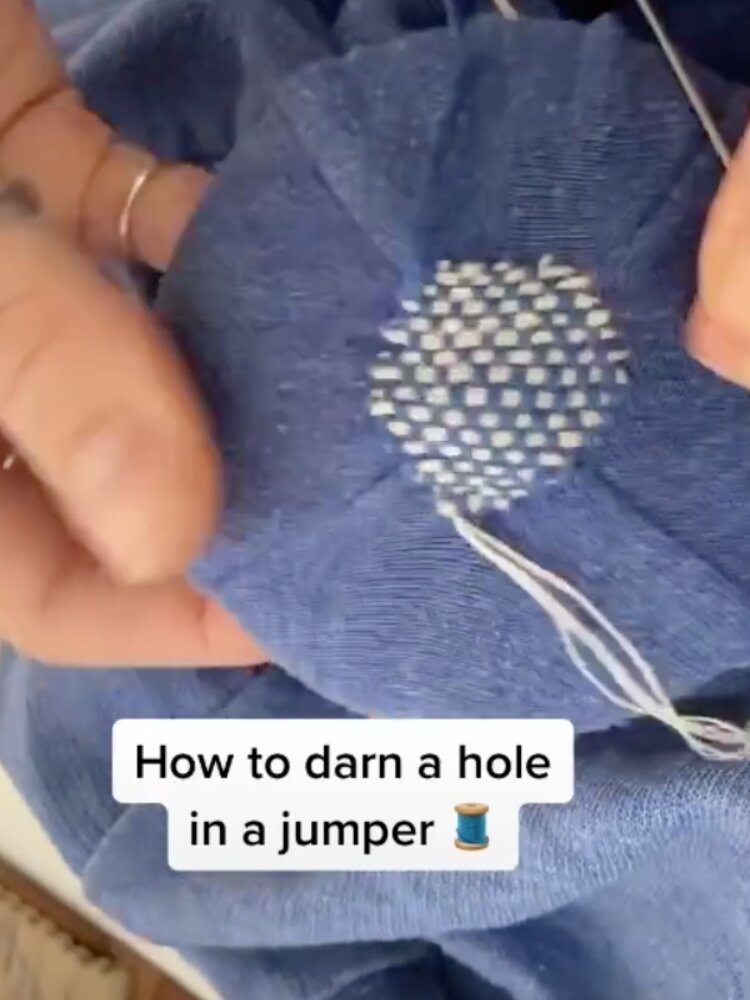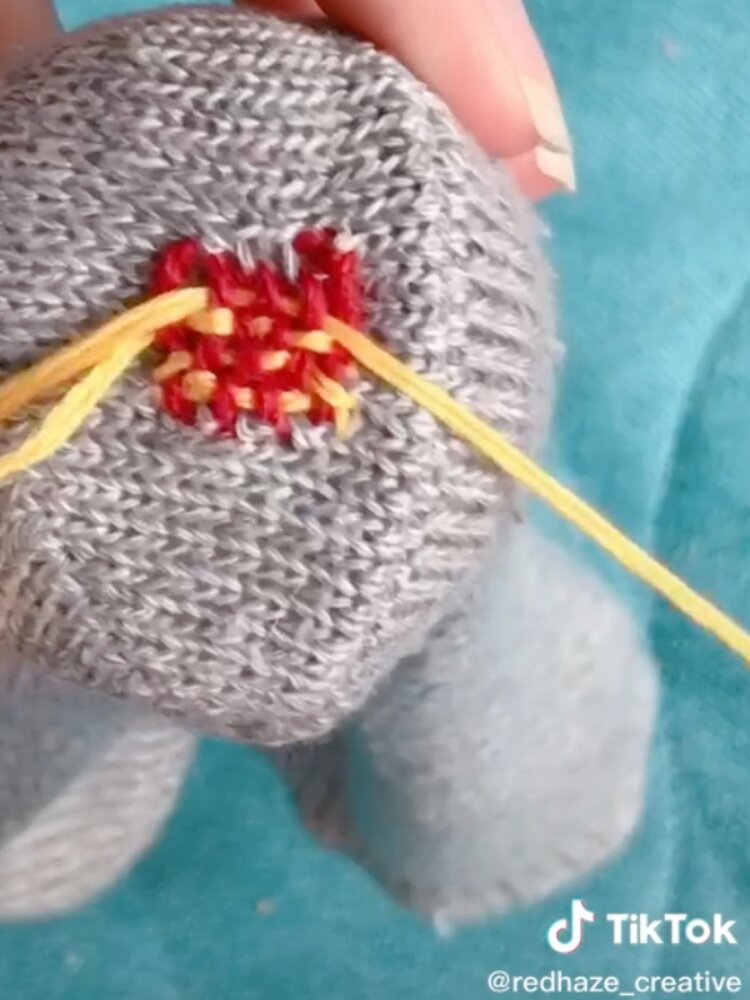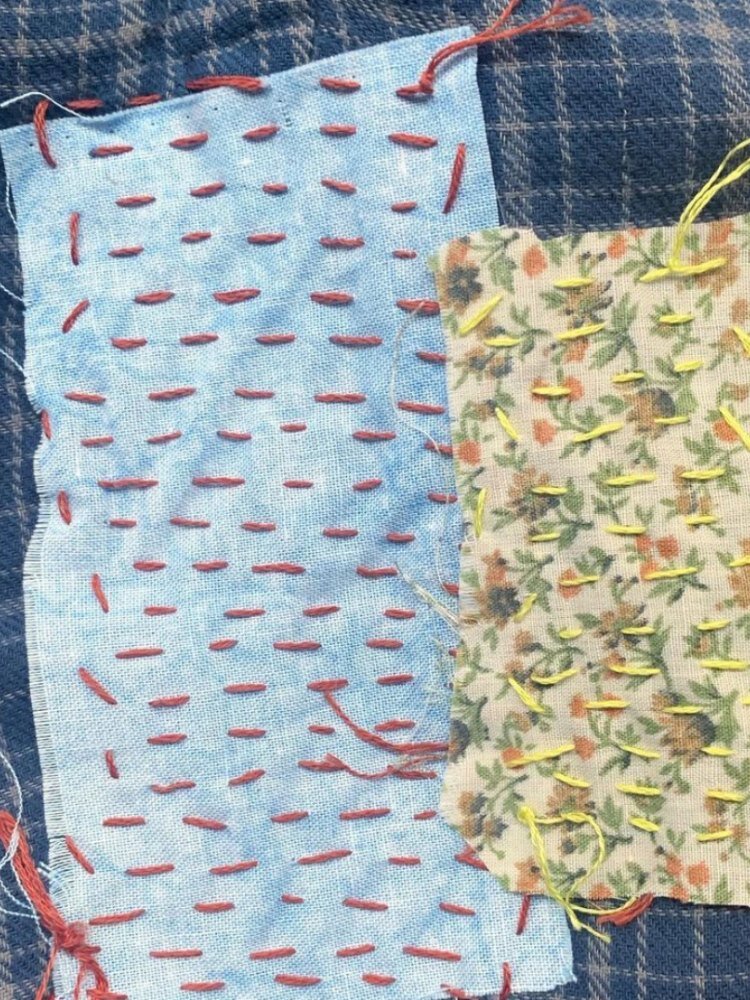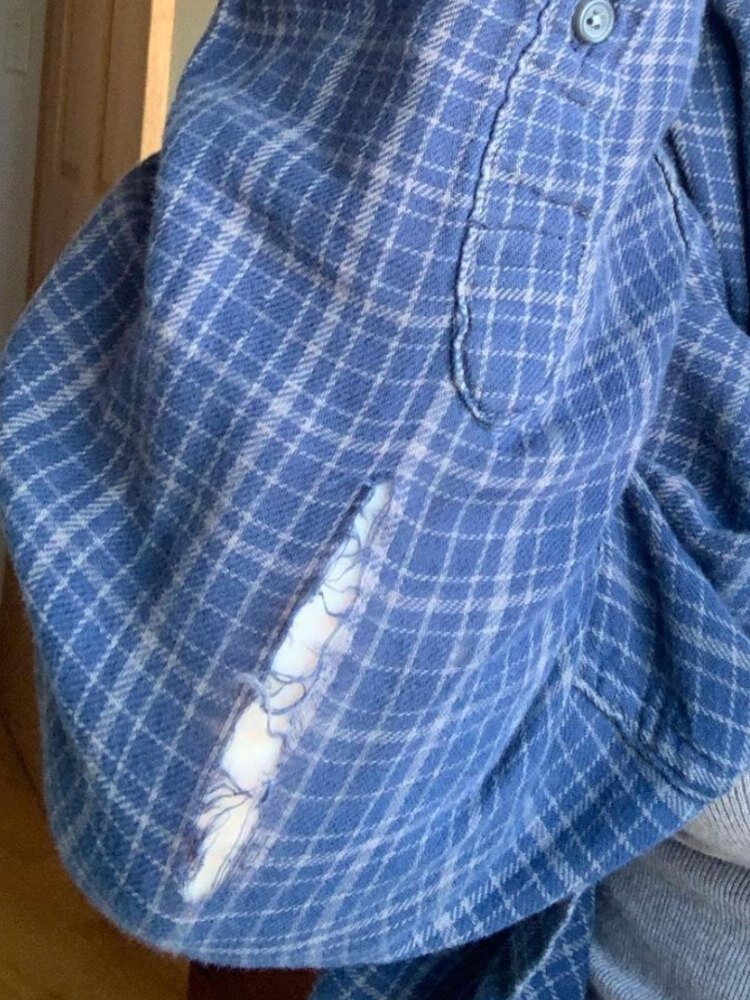Fast fashion, yeah, we moan and bitch about getting rid of it, wonder who thought up such a bad idea in the first place, but what do you do with a closet full of those once cheap and now (we realize) quite expensive items that pile up in the landfills, refusing to compost, creating havoc in our ethically conscious minds…how about giving them a longer life by mending them? In other words, how to outsmart the planned obsolescence of those worn out garments? If you double the life of your clothes from simply one to two years, it’s estimated that emissions are reduced by 24%. So what’s stopping you? Let’s get out the needle and thread and look into some creative ways to mend.
Detail of a mid-19th century kimono decorated using sashiko, with white cotton threads on an indigo-dyed plain weave background (Metropolitan Museum of Art)
Though some people like to mend their clothes seamlessly, others see it as a chance to get creative. Visible mending allows you to save your clothes while really making the pieces in your closet unique.
Usually stitched by hand, visible mending closely resembles sashiko, a traditional Japanese embroidery or stitching technique. In the beginning, sashiko was used as a way to strengthen the seams of old, worn out clothes to make them last longer. This could be with simple stitching or adding patches to make the fabric thicker and more durable. Today, visible mending has some of the same effects.
Before you begin working on your torn clothes, there are a few things to keep in mind.
via slowstitch
First, always have an idea before you get started.
It can be easy to get ahead of yourself, but make sure you have all the supplies you need to execute your design.
via redhaze_creative
Next, stabilize your fabric.
Make sure it won’t slide around your workspace. Remember small, tight stitches tend to work better when patching up holes.
Lastly, be mindful of how you’ll care for your clothes afterwards.
Think about the best washing methods for the fabric and the materials you used to mend it.
images via @mindful_mending
Now that you know its origin and a few tips to get you started, all you need now is some inspiration. On TikTok, #visible mending videos have over three million views. User redhaze_creative makes videos on mending and textiles, including this one on how to repair a sock. Skye from slowstitchclub also has some great videos on repairing sweaters and utilizing patches.
If you’re not on TikTok, Lily Fulop, author of Wear, Repair, Repurpose, shares tips on mending, making clothes last and quitting fast fashion on her Instagram. Try some techniques out and be sure to share with us on instagram!
–Maria Fiume
Where to donate your old clothes beyond a thrift store or basic charity
Where and how to swap instead of shop
Wear, Repair, Repurpose: We talked to the author Lily Fulop on mending your clothes
5 Best Books on Climate and Consumer
Why Swapping is Better Than Shopping

